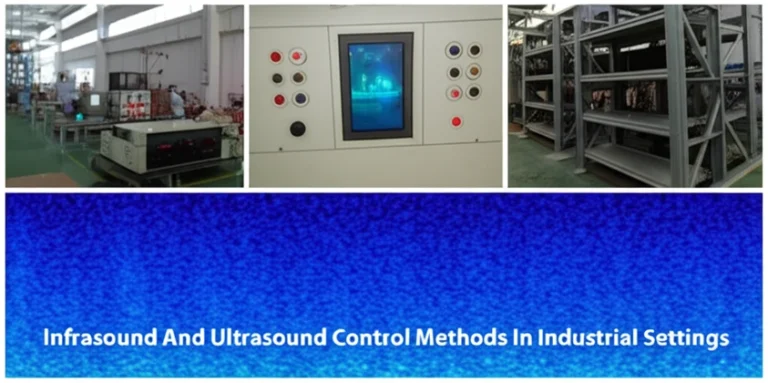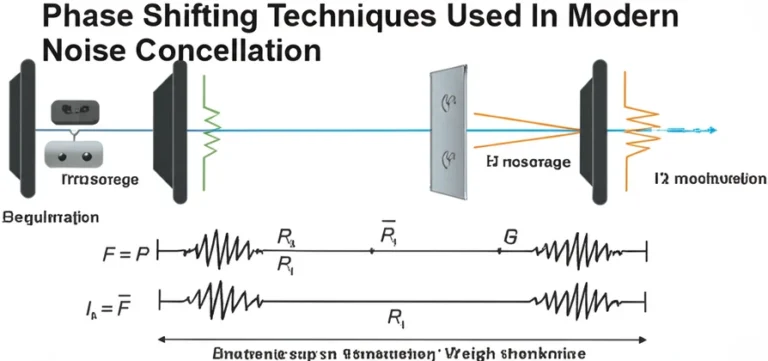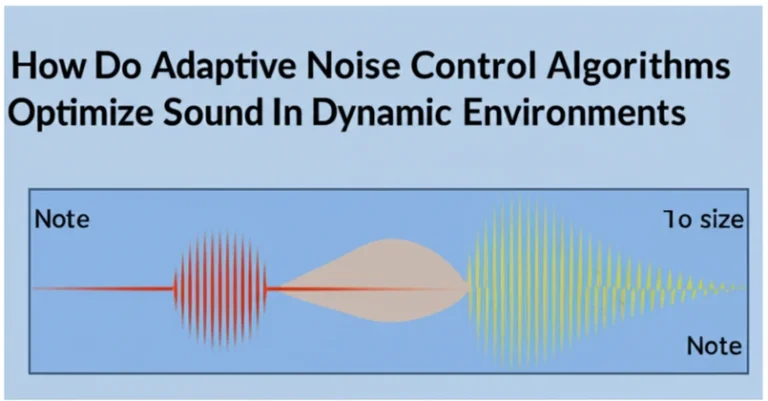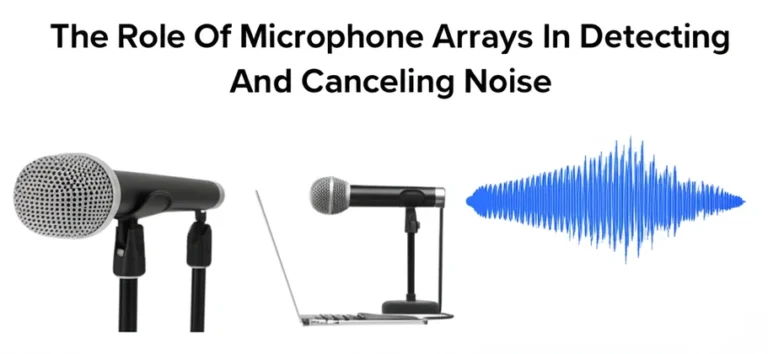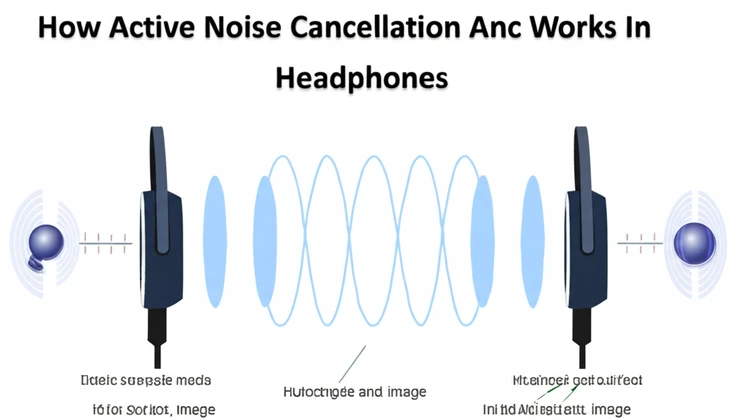
Imagine stepping onto a crowded subway platform, yet hearing only the crisp notes of your favorite concerto. Or picture yourself in a bustling office, completely absorbed in your work, oblivious to the ringing phones and chatter around you. This is the power of Active Noise Cancellation (ANC) headphones.
These remarkable devices use sophisticated technology to create an oasis of calm amidst the noise, transforming how we experience audio in our increasingly noisy world.
Active Noise Cancellation (ANC), also known as noise reduction, is a complex process involving microphones, speakers, and intricate algorithms working in concert to minimize unwanted ambient noise. Unlike passive noise isolation, which relies on physical barriers like ear cup padding, ANC actively counteracts noise, offering a dramatically quieter listening experience. This article delves deep into how active noise cancellation (ANC) works in headphones, exploring its various types, advantages, limitations, and applications.
What Is Active Noise Cancellation (ANC)?
Active Noise Cancellation is a technology engineered to neutralize unwanted ambient sounds by introducing a secondary sound specifically designed to cancel them out.
This process hinges on the principle of destructive interference, where two sound waves of equal amplitude and opposite phase combine to effectively eliminate each other. Instead of merely muffling noise like passive noise reduction, ANC utilizes a complex system of microphones, speakers, and a specialized ANC chipset to actively counteract intrusive sounds.
Key Components of ANC:
- Microphones: These are the ears of the ANC system, strategically placed to detect incoming ambient noise. Their placement (outside or inside the earcup) varies depending on the type of ANC employed.
- ANC Chipset: This is the brain of the operation.
The ANC chipset analyzes the sound waves captured by the microphones, and in real-time, generates an inverse sound wave. This requires sophisticated algorithms and digital signal processing (DSP) capabilities to accurately analyze and counteract the noise. The chipset’s performance determines the effectiveness and speed of the noise cancellation.
- Speakers: These deliver the “anti-noise.” The headphones’ speakers play back the inverted sound wave created by the chipset.
This anti-noise mixes with the original ambient noise, resulting in destructive interference and a significant reduction in the perceived sound level.
ANC is particularly effective at mitigating low-frequency, consistent sounds like the drone of airplane engines or the hum of an air conditioner. However, it is less effective against higher-frequency and erratic sounds like sudden voices or sharp, transient noises.
How Does ANC Work?
Step 1: Sound Detection
Highly sensitive microphones, positioned either on the outer surface or within the earcups of the headphones, capture the surrounding ambient noise. The placement of these microphones plays a critical role in the type and effectiveness of the electronic noise cancellation.
Step 2: Inverse Wave Creation
The captured sound wave is transmitted to the ANC chipset.
The chipset analyzes the waveform and in microseconds, creates an inverted replica – a mirror image of the original sound wave, but 180 degrees out of phase. This inverted wave is called the anti-noise.
Step 3: Noise Cancellation
The anti-noise wave is then played through the headphone speakers simultaneously with the desired audio. When the original noise wave and the anti-noise wave collide, they cancel each other out through electronic noise cancellation.
This results in a significant reduction in the amplitude of the combined wave, effectively silencing the ambient noise.
Types of ANC Technology
Feedforward ANC
- How it works: A microphone is placed on the outside of the earcup to detect ambient noise *before* it enters the ear canal. This allows the system to anticipate and counteract the noise proactively.
- Advantages: Particularly effective against predictable, consistent low-frequency noises like engine rumble or the hum of an air conditioner.
- Limitations: Less effective at canceling high-frequency sounds, sudden noises, and wind noise, which can be misinterpreted and amplified. The placement of the microphone also makes it more susceptible to picking up wind noise.
Feedback ANC
- How it works: The microphone is located inside the earcup, closer to the speaker.
This microphone detects the sound that has already entered the earcup, including any residual noise that wasn’t canceled by the feedforward system (if present).
- Advantages: Better suited for dynamic noise environments and can address a wider range of frequencies than feedforward ANC. It’s also less susceptible to wind noise.
- Limitations: Can sometimes introduce feedback loops or distort the desired audio if not calibrated precisely. It might struggle with very loud, sudden noises.
Hybrid ANC
- How it works: Combines both feedforward and feedback ANC by utilizing both internal and external microphones.
This approach leverages the strengths of both systems.
- Advantages: Offers the most comprehensive noise cancellation across a broader spectrum of frequencies and noise types. Provides better performance against both predictable, constant noises and sudden, high-frequency sounds.
- Limitations: More complex and typically more expensive to implement. Requires more processing power which can impact battery life.
Benefits of ANC Headphones
Immersive Audio Experience
By minimizing external distractions, ANC allows you to fully immerse yourself in your audio content.
Whether you’re listening to music, podcasts, or audiobooks, ANC significantly enhances the listening experience by reducing background noise and bringing the desired audio to the forefront. This allows you to hear subtle details and nuances in your audio that would otherwise be lost in the background noise.
Improved Focus and Productivity
In busy environments like open-plan offices, cafes, or during commutes, ANC headphones help create a bubble of quiet, fostering concentration and improving productivity. Studies have shown that reducing background noise can significantly improve focus and reduce stress levels, leading to increased efficiency.
Hearing Protection
ANC headphones protect your hearing by reducing the need to increase volume to overcome background noise.
Prolonged exposure to high sound levels can damage hearing over time. By lowering the volume required for comfortable listening, ANC helps preserve your hearing health.
Applications of ANC Technology
Travel
ANC headphones are a game-changer for frequent travelers, providing respite from the constant drone of airplane engines, noisy train carriages, and the general hubbub of airports and stations. This allows for a more relaxing and enjoyable travel experience.
Work Environments
ANC headphones are invaluable in open office spaces and other noisy work environments, facilitating concentration and promoting a more productive work flow.
They can also be essential for remote workers who need to create a quiet workspace in a less than ideal environment.
Daily Commutes
Transform your daily commute into a peaceful escape with ANC headphones. Whether you’re on a bus, train, or even walking along a busy street, ANC helps block out the distractions of city noise and allows you to enjoy your music, podcasts, or simply enjoy the quiet.
FAQ
How effective is ANC in completely eliminating noise?
While ANC is remarkably effective at reducing low-frequency, consistent noises, it can’t eliminate all sounds. High-frequency sounds like children’s cries or sudden, sharp sounds like a dog barking are more challenging for ANC to cancel completely.
Furthermore, the effectiveness of ANC varies depending on the quality of the headphones and the specific implementation of the technology.
Does ANC affect audio quality?
Modern, well-implemented ANC has minimal impact on audio quality. In some cases, it can even enhance the clarity of the audio by removing competing background noise. However, some less sophisticated ANC implementations can introduce subtle hiss or alter the frequency response of the audio.
Are ANC headphones safe for prolonged use?
Yes, ANC headphones are safe for extended use.
In fact, they can contribute to hearing health by reducing the need to listen at high volumes in noisy environments.
What’s the difference between ANC and passive noise isolation?
ANC actively counteracts noise through electronic noise cancellation, while passive noise isolation simply blocks sound waves physically using materials like dense foam earcups. ANC is more effective against low-frequency rumble, while passive isolation is generally better at attenuating higher-frequency noise.
Conclusion
Active Noise Cancellation in headphones has revolutionized how we listen to audio in noisy environments. By intelligently using the principles of sound wave behavior, ANC provides a significantly quieter and more immersive listening experience.
Whether you’re a frequent traveler, a busy professional, or simply someone who values peace and quiet, understanding how active noise cancellation (ANC) works in headphones can help you choose the best headphones for your needs and enjoy the benefits of this remarkable technology. From basic feedforward systems to sophisticated hybrid implementations, ANC continues to evolve, promising even quieter and more immersive listening experiences in the future.

